 MyDogBreeds
MyDogBreeds Broholmer is originated from Denmark but Poodle is originated from Germany. Broholmer may grow 30 cm / 12 inches higher than Poodle. Broholmer may weigh 46 kg / 102 pounds more than Poodle. Broholmer may live 3 years less than Poodle. Both Broholmer and Poodle has almost same litter size. Broholmer requires Moderate maintenance. But Poodle requires High maintenance
Broholmer is originated from Denmark but Poodle is originated from Germany. Broholmer may grow 30 cm / 12 inches higher than Poodle. Broholmer may weigh 46 kg / 102 pounds more than Poodle. Broholmer may live 3 years less than Poodle. Both Broholmer and Poodle has almost same litter size. Broholmer requires Moderate maintenance. But Poodle requires High maintenance
 This giant dog, the Broholmer, comes from Denmark and falls into the general Molosser type of Mastiff dog. The breed was originally developed by crossing the local German dogs with the English Mastiffs to create what is also known as a Danish Mastiff. The breed is named after an 18th century game-keeper names Sehested of Broholm. This type of dog has been present however since the Middle Ages in Europe. It started out as a stag hunting dog but quickly evolved into a guard dog. They were greatly favored by the wealthy and nobility, including being featured in portraits with King Frederick VII and Countess Danner.
This giant dog, the Broholmer, comes from Denmark and falls into the general Molosser type of Mastiff dog. The breed was originally developed by crossing the local German dogs with the English Mastiffs to create what is also known as a Danish Mastiff. The breed is named after an 18th century game-keeper names Sehested of Broholm. This type of dog has been present however since the Middle Ages in Europe. It started out as a stag hunting dog but quickly evolved into a guard dog. They were greatly favored by the wealthy and nobility, including being featured in portraits with King Frederick VII and Countess Danner.
Like many European dogs, the Broholmer, did not fare well during the second World War. During this time there was little purebred breeding and their numbers decreased almost to the point of extinction. Brought back by a group called “The Society for the Reconstruction of the Broholmer Breed”. With the support of the Danish Kennel Club, they were successful in bring the breed back. They were recognized by both the Federation Cynoloqique Internationale and the Danish Kennel Club. By 2009 they were being imported to the United Kingdom, hoping to get them onto the import lists of the United Kingdom kennel club (UKC).
 Poodles are said to be older breed which is developed to hunt waterfowl. They have their origin in Germany and developed as a breed in France. Many different arguements are there in their development. One of the arguement says that they are developed as a result of crossing European Water dogs. Egyptian and Roman histories have proof of Poodles in their drawings and statues. They were categorized into three types according to their size and are Miniature, Toy and Standard.
Poodles are said to be older breed which is developed to hunt waterfowl. They have their origin in Germany and developed as a breed in France. Many different arguements are there in their development. One of the arguement says that they are developed as a result of crossing European Water dogs. Egyptian and Roman histories have proof of Poodles in their drawings and statues. They were categorized into three types according to their size and are Miniature, Toy and Standard.
 The Broholmer is a very large dog with Mastiff qualities. He is strong, rectangular and powerful in build. He has a massive head and neck with a deep and broad chest. The length of the nose is the same as the length of the skull. He is tall, well built and his thing and hindquarters are powerful. His stance and gait are powerful and intimidating as well. His appearance and size alone account for his guard dog status. However, he is a little smaller than most Mastiffs and he is athletic looking as well.
The Broholmer is a very large dog with Mastiff qualities. He is strong, rectangular and powerful in build. He has a massive head and neck with a deep and broad chest. The length of the nose is the same as the length of the skull. He is tall, well built and his thing and hindquarters are powerful. His stance and gait are powerful and intimidating as well. His appearance and size alone account for his guard dog status. However, he is a little smaller than most Mastiffs and he is athletic looking as well.
The Broholmer is a double coated breed with a short topcoat and a thick undercoat. The color of the Broholmer is yellow or a golden red. Some have white on the feet, tail tip or chest and some have a black mask. Most do not have any mask.
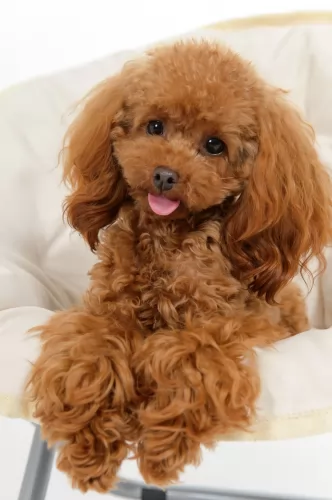 Poodles today lives a luxury life but actually they are bred to do work. They are well known for their intelligence and are really water retriever. This is because they show their energy in hunting waterfowl. The name Poodle is said to got from German word "Pudel" which means "splash in the water".
Poodles today lives a luxury life but actually they are bred to do work. They are well known for their intelligence and are really water retriever. This is because they show their energy in hunting waterfowl. The name Poodle is said to got from German word "Pudel" which means "splash in the water".
Their hair is trimmed in such a way to make them swim easily. Hair is not trimmed in the joints and organs such that to protect them from cold water. Poodles are well known for their wonderful personality and intelligence. Also they are very obedient and a good companion. They won't be happy if left alone for a long time. Poodles are interested in playing games with people. They perform very well if given a proper training. Good manners should be taught to them as they remember all things they have learned.
 The Broholmer is a calm, friendly dog. He is a large dog that thinks he is a lap dog. He wants to be close and snuggle with his people all the time. He is great with kids and other dogs. At the same time, he can be very watchful and protective. Because of this along with his size he needs a strong owner who is clearly the pack leader. He is wary and protective around strangers and can be stubborn if he thinks he is in charge.
The Broholmer is a calm, friendly dog. He is a large dog that thinks he is a lap dog. He wants to be close and snuggle with his people all the time. He is great with kids and other dogs. At the same time, he can be very watchful and protective. Because of this along with his size he needs a strong owner who is clearly the pack leader. He is wary and protective around strangers and can be stubborn if he thinks he is in charge.
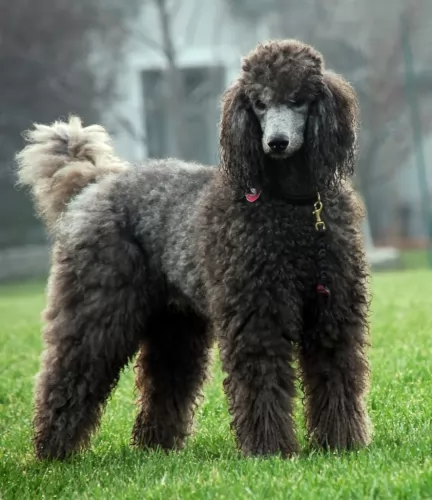 They are good companions and usually likes to spend time with children. Even they are children friendly it is strongly recommended not to leave children alone with them.
They are good companions and usually likes to spend time with children. Even they are children friendly it is strongly recommended not to leave children alone with them.
Poodles are specialist in hunting water birds. They are good in swimming since they are covered with fur water will not easily get into their ears. They are well known for their intelligence like humans.
They are well suited for apartment living but won't be happy if left alone. They will tolerate hot weather better when compared with cold.
They are quick learners and learn good and bad things very quickly. Once they learn, they won't forget it up. Since poodles are so intelligent they are very easy to train.
 The Broholmer faces many of the same health issues as other large breeds, even though he is overall a very healthy breed. Some of the types of health issues the Broholmer might deal with include:
The Broholmer faces many of the same health issues as other large breeds, even though he is overall a very healthy breed. Some of the types of health issues the Broholmer might deal with include:
Bloat – caused by eating a large meal too quickly and drinking a lot of water or exercising too soon before or after the large meal.
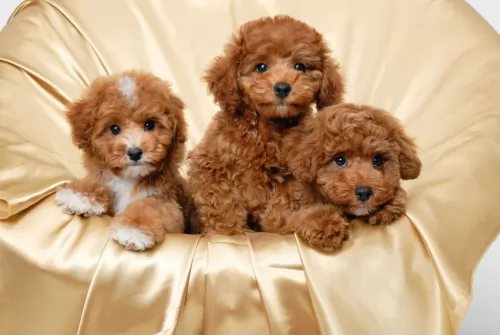 Poodles have more chances for getting eye diseases such as Progressive retinal atrophy and cataracts. Cancer is also seen in them and there are chances of skin problems such as allergies and tumors.
Poodles have more chances for getting eye diseases such as Progressive retinal atrophy and cataracts. Cancer is also seen in them and there are chances of skin problems such as allergies and tumors.
Usually poodles don't shed at all. Excessive shedding is the smptom of allergies in them. When they get other problems shedding accompanies with it. Even an infection may cause hairfall. Ringworm infections and pests should be controlled using appropriate medicines.
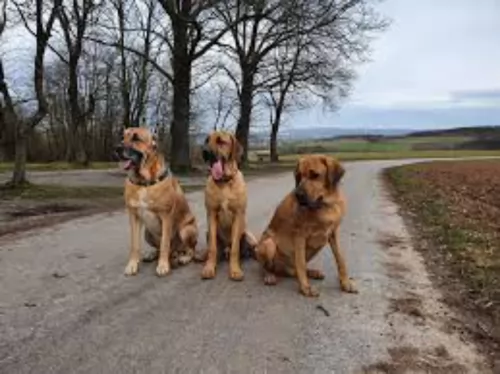 Don’t overfeed the Broholmer. Give her about three and three quarters to nine cups of a high quality dry food. Depending on the size of your dog, adjust the amount of food within the guidelines listed here. Feed at least twice a day. Use a large breed dog food.
Don’t overfeed the Broholmer. Give her about three and three quarters to nine cups of a high quality dry food. Depending on the size of your dog, adjust the amount of food within the guidelines listed here. Feed at least twice a day. Use a large breed dog food.
Bloat – when the stomach is twisted and distended. This can cause death is not responded to by a vet immediately.
Eye Issues – Entropion turning inward of eyelids and irritating eye; Ectropium eyelids turn outward, Cataracts and Progressive Retinal Atrophy (PRA) -genetic defects of the retina can cause blindness.
The Broholmer is not an overly active dog but he is big and athletic so has strong exercise needs. A large fenced in back yard is essential or be prepared for several long walks every day. You can play inside games like teaching new tricks or hide and seek but remember this is a big dog. He would love to swim, play frisbee or ball, go hiking or organized activities such as fly ball, agility, rally and obedience. Don’t let your Broholmer over exercise while it is young and still growing. He needs as much mental stimulation as physical exercise.
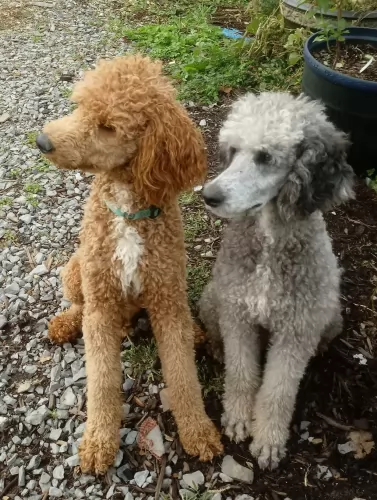 Usually puppy eats more food than an adult dog. This is because they need more food to support growth. Actully puppies need two to four times more food than adult. Puppies should eat in such a way that their ribs should not be seen and waist must be visible.
Usually puppy eats more food than an adult dog. This is because they need more food to support growth. Actully puppies need two to four times more food than adult. Puppies should eat in such a way that their ribs should not be seen and waist must be visible.
Poodles can be fed with proteinous food, healthy grains, vegetables and fruits. They love to eat organs such as liver, kidney, brain and chicken breast, turkey and fish. Vegetables such as baby carrots, spinach and peas can be given to them. Make them to eat fruits like raspberries, banana and melon.
Dry kibble is not good for their teeth. Even some premium quality foods are not good for their health. Pig's ears are not safe to chew for them. Vaccinations should be made at the right time.
Exercises play an important role in their health and even extend their life. Poodles should be made to walk regularly. Exercising must be done to a particular level and they should not be over exercised.